The Small Munsterlander Pointer, one of the four original versatile hunting breeds, is a wonderful all-around gun dog and household companion. The Munster (pronunciation: ‘mün-st![]() r)(loosely: ‘moon-stur) can efficiently carry out the duties of a pointer and retriever of both fur and feathered game from land or water.
r)(loosely: ‘moon-stur) can efficiently carry out the duties of a pointer and retriever of both fur and feathered game from land or water.
With an increase in the number of hunters and hunting enthusiasts, and the systematic cultivation of game stock resulting from a change in the German hunting laws during the middle of the 19th century, the breeding of new German pointing dogs began. There are reports saying that around 1870 long-coated Wachtelhunds(German Spaniels) were well known in the Munsterland region.  These dogs were firm in pointing; had enormous scenting abilities; and were also able to retrieve. In 1906, the well-known poet, Hermann Löns, made a public appeal in the magazine Unser Wachtelhund to give him a report on the still existing specimens of the red Hanovarian Heath Hound. As a result, he and his brothers discovered a pointing Wachtelhund they called Heidewachtel. The Löns brothers and other well-known dog breeders, like the Baron of Bevervörde-Lohburg, put efforts into getting Heidewachtel breeding stock into other regions in Germany as well. Mr. Heitmann, a teacher from Burgsteinfurt, achieved first success with his line breeding. Several other lines, known as the so-called ‘Dorsten type’, appeared during the following years in Westphalia. On March 17, 1912, the Verband für Kleine Münsterländer Vorstehhunde (Club for Small Munsterlander Pointing Dogs) was finally founded. At that time, the Club expressed its aims as follows: “The Club pursues the purpose to promote the purity and the true breeding of the long-coated small pointing dog that has been bred in the Munsterland for many decades.” A lack of fixed breed characteristics at that time inhibited breeding activities as well as Club activities. Starting in 1921, breeders finally began to follow the breed standard drawn up by Mr. Friedrich Jungklaus. Nevertheless, the true origin of the Small Munsterlander Pointing Dogs has not been proved. [Read more about the history and origin of the Small Munsterlander Pointer.]
These dogs were firm in pointing; had enormous scenting abilities; and were also able to retrieve. In 1906, the well-known poet, Hermann Löns, made a public appeal in the magazine Unser Wachtelhund to give him a report on the still existing specimens of the red Hanovarian Heath Hound. As a result, he and his brothers discovered a pointing Wachtelhund they called Heidewachtel. The Löns brothers and other well-known dog breeders, like the Baron of Bevervörde-Lohburg, put efforts into getting Heidewachtel breeding stock into other regions in Germany as well. Mr. Heitmann, a teacher from Burgsteinfurt, achieved first success with his line breeding. Several other lines, known as the so-called ‘Dorsten type’, appeared during the following years in Westphalia. On March 17, 1912, the Verband für Kleine Münsterländer Vorstehhunde (Club for Small Munsterlander Pointing Dogs) was finally founded. At that time, the Club expressed its aims as follows: “The Club pursues the purpose to promote the purity and the true breeding of the long-coated small pointing dog that has been bred in the Munsterland for many decades.” A lack of fixed breed characteristics at that time inhibited breeding activities as well as Club activities. Starting in 1921, breeders finally began to follow the breed standard drawn up by Mr. Friedrich Jungklaus. Nevertheless, the true origin of the Small Munsterlander Pointing Dogs has not been proved. [Read more about the history and origin of the Small Munsterlander Pointer.]
 These dogs were firm in pointing; had enormous scenting abilities; and were also able to retrieve. In 1906, the well-known poet, Hermann Löns, made a public appeal in the magazine Unser Wachtelhund to give him a report on the still existing specimens of the red Hanovarian Heath Hound. As a result, he and his brothers discovered a pointing Wachtelhund they called Heidewachtel. The Löns brothers and other well-known dog breeders, like the Baron of Bevervörde-Lohburg, put efforts into getting Heidewachtel breeding stock into other regions in Germany as well. Mr. Heitmann, a teacher from Burgsteinfurt, achieved first success with his line breeding. Several other lines, known as the so-called ‘Dorsten type’, appeared during the following years in Westphalia. On March 17, 1912, the Verband für Kleine Münsterländer Vorstehhunde (Club for Small Munsterlander Pointing Dogs) was finally founded. At that time, the Club expressed its aims as follows: “The Club pursues the purpose to promote the purity and the true breeding of the long-coated small pointing dog that has been bred in the Munsterland for many decades.” A lack of fixed breed characteristics at that time inhibited breeding activities as well as Club activities. Starting in 1921, breeders finally began to follow the breed standard drawn up by Mr. Friedrich Jungklaus. Nevertheless, the true origin of the Small Munsterlander Pointing Dogs has not been proved. [Read more about the history and origin of the Small Munsterlander Pointer.]
These dogs were firm in pointing; had enormous scenting abilities; and were also able to retrieve. In 1906, the well-known poet, Hermann Löns, made a public appeal in the magazine Unser Wachtelhund to give him a report on the still existing specimens of the red Hanovarian Heath Hound. As a result, he and his brothers discovered a pointing Wachtelhund they called Heidewachtel. The Löns brothers and other well-known dog breeders, like the Baron of Bevervörde-Lohburg, put efforts into getting Heidewachtel breeding stock into other regions in Germany as well. Mr. Heitmann, a teacher from Burgsteinfurt, achieved first success with his line breeding. Several other lines, known as the so-called ‘Dorsten type’, appeared during the following years in Westphalia. On March 17, 1912, the Verband für Kleine Münsterländer Vorstehhunde (Club for Small Munsterlander Pointing Dogs) was finally founded. At that time, the Club expressed its aims as follows: “The Club pursues the purpose to promote the purity and the true breeding of the long-coated small pointing dog that has been bred in the Munsterland for many decades.” A lack of fixed breed characteristics at that time inhibited breeding activities as well as Club activities. Starting in 1921, breeders finally began to follow the breed standard drawn up by Mr. Friedrich Jungklaus. Nevertheless, the true origin of the Small Munsterlander Pointing Dogs has not been proved. [Read more about the history and origin of the Small Munsterlander Pointer.] In addition to being a tireless hunter and tracker, the Munster was developed to double as the family pet and watchdog. The Munsters of today do far more than just hunt. Because of their superior scenting and tracking abilities, Munsters are being used for Search and Rescue (finding lost people). Also, because of their high intelligence, cooperative nature, and calm demeanor, Munsters are being used as Service (Assistance) Dogs.
In addition to being a tireless hunter and tracker, the Munster was developed to double as the family pet and watchdog. The Munsters of today do far more than just hunt. Because of their superior scenting and tracking abilities, Munsters are being used for Search and Rescue (finding lost people). Also, because of their high intelligence, cooperative nature, and calm demeanor, Munsters are being used as Service (Assistance) Dogs.For 40 years, beginning with Dell’s “Original Pete,” we used German Shorthaired Pointers to hunt pheasant, quail, chukar and ducks. For about 10 years we raised and trained GSPs, specializing in smaller-sized, solid liver GSPs. Then, in 2006, while researching on the Web to purchase a female GSP for breeding, Michelle ran across an advertisement for a litter of Small Munsterlander Pointers.
 Being completely unfamiliar with the SM breed, Michelle began looking into them and what she found really piqued her interest. Over the next few months, Michelle did more research on the breed and spoke with several breeders in the Midwest about the Munster’s cooperative nature in the field and calm demeanor in the house. Although the GSP is an outstanding versatile hunting breed, an inordinate amount of time was spent training them to consistently hunt close enough to get a shot at wild pheasant on the Preserve’s Grasslands.
Being completely unfamiliar with the SM breed, Michelle began looking into them and what she found really piqued her interest. Over the next few months, Michelle did more research on the breed and spoke with several breeders in the Midwest about the Munster’s cooperative nature in the field and calm demeanor in the house. Although the GSP is an outstanding versatile hunting breed, an inordinate amount of time was spent training them to consistently hunt close enough to get a shot at wild pheasant on the Preserve’s Grasslands.That Fall, we put down a deposit for a female from Gosch Kennel’s litter planned for early 2007. We had third pick of the litter whelped on January 10th and eight weeks later we headed for western Iowa to pick up KD.
Within six months of bringing KD home, we made the decision to sell our GSPs and replace them with Munsters. Anna, from Riverhills Kennel, joined us in November 2007, and Gracie, from Goodman’s Eagle Point Kennel, arrived in May 2008. Abi arrived in October of 2008 from Riverhills Kennel to complete our switch of breeding stock to the SM breed. Sadly, Gracie and Abi did not meet our high breeding standards and were sold as well-started hunters at age 2. Anna delivered her B litter in January of 2011, from which we kept Tess. Anna’s E Litter arrived in October of 2013, from which we kept Bella. We purchased Lizzy from Mustain Kennels in March of 2014. Unfortunately, Lizzy did not meet our high breeding standards and was sold as started hunter in 2015 to the same couple who purchased Abi from us in 2009. KD had her K Litter K Litter on October 29, 2014, from which we kept Molly. KD had her N Litter N Litter on July 1, 2015, from which we kept Nikki. Sadly, Nikki died suddenly in the Fall of 2017 from an accidental poisoning. We imported Kimber and Evefrom the Czech Republic in 2016. Anna’s U Litter arrived in August of 2017, from which we kept Mazy. Tess’ V Litter arrived in October of 2017, from which we kept Grace. Molly’s Z Litter arrived in September of 2018, from which we kept Hazel.
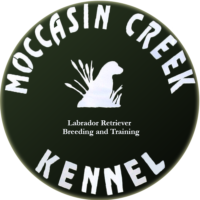
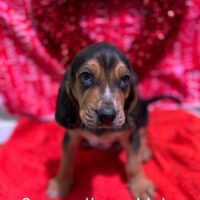
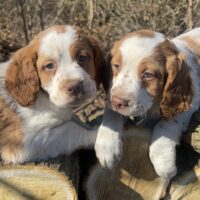
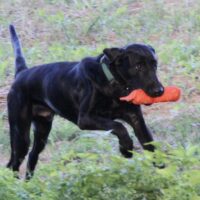
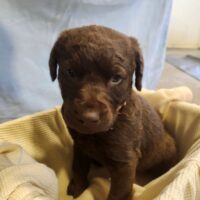
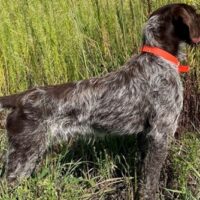
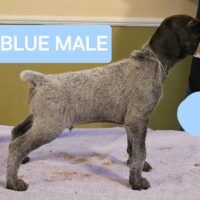
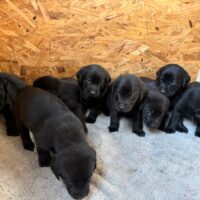
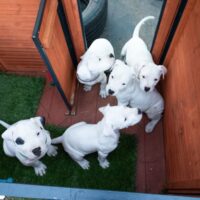
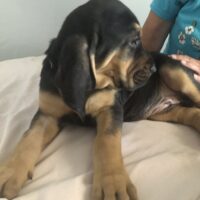

Speak Your Mind